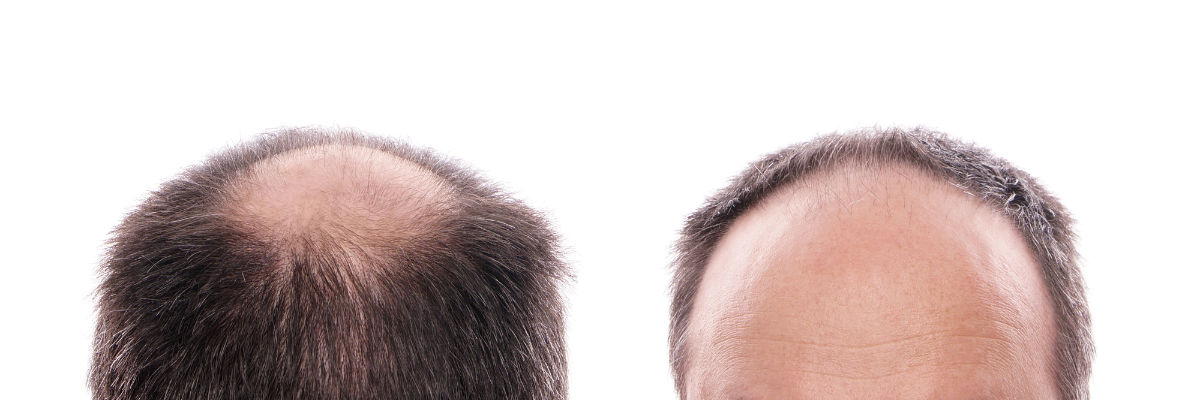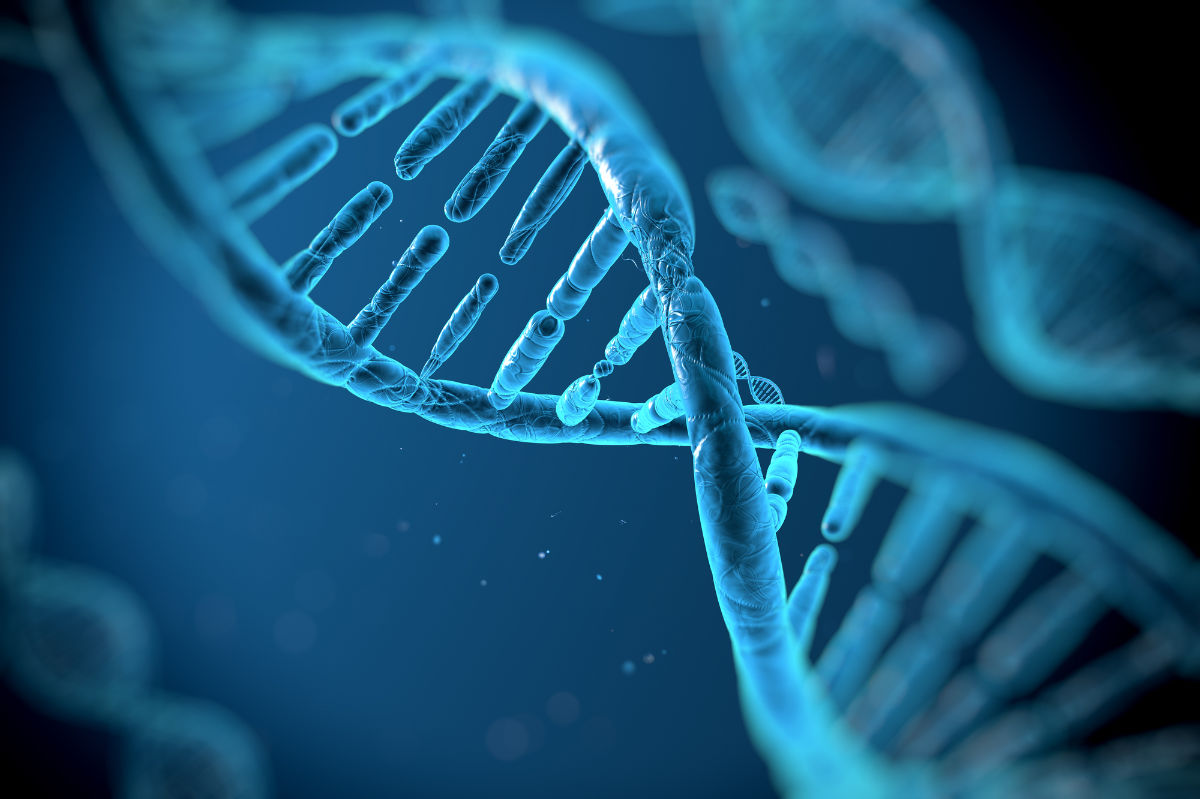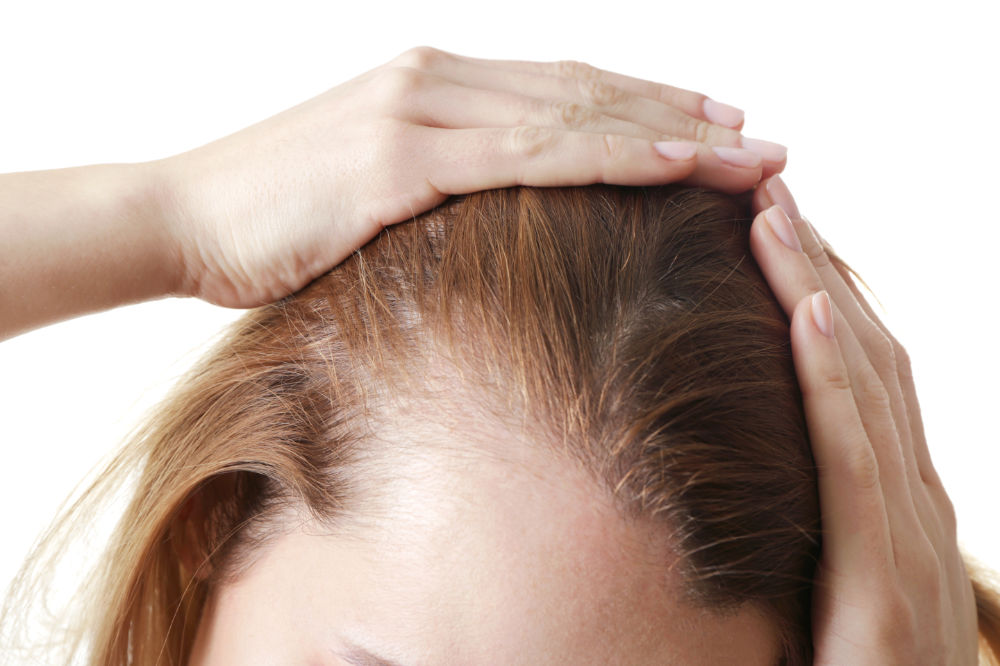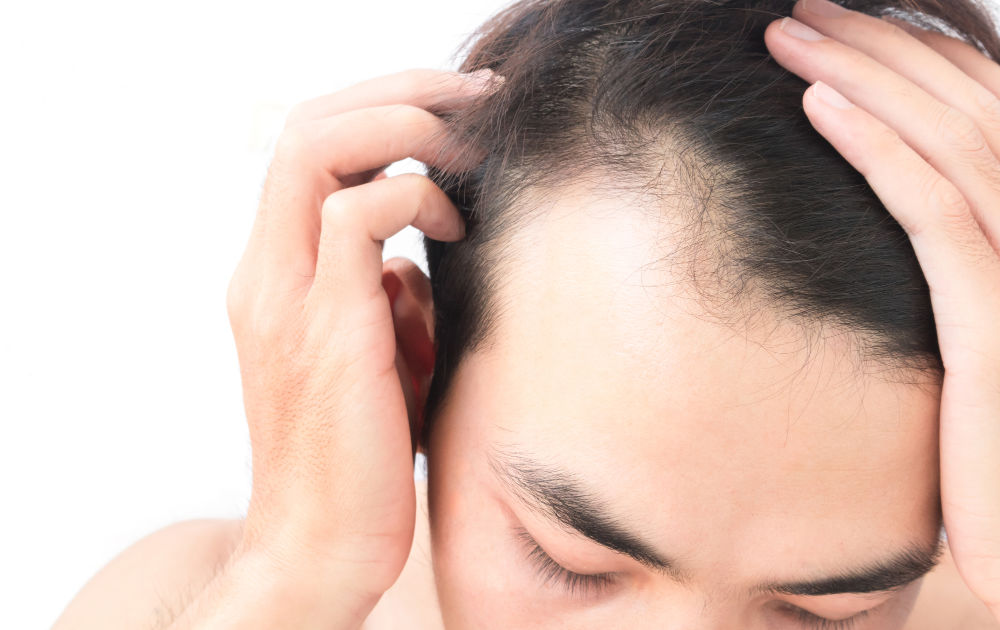Receding hairlines are more common than you might think, regardless of gender. Both men and women can experience thinning hair, hair loss, or a receding hairline as they age. Other factors also come into play, including disease.
While a receding hairline bothers some people more than others in terms of confidence and perceived self-image, it does not have to be permanent. Many promising hair loss treatments and therapies exist to keep receding hairlines at bay, including medically reviewed options. The sooner you act, the more likely you are to succeed.
What is a Receding Hairline & What Are The Different Stages?

What is a receding hairline, and why does it often happen differently for women and men? Loss varies between genders and individuals, and male pattern hair loss tends to start around the temples and move around towards the back of the head. It can also leave a V-shaped or M-shaped growth pattern instead of receding evenly (for women as well).
Some receding hairlines accompany a bald spot that forms on the crown. Eventually, the receding hairline and the bald spot meet, which may result in total baldness. It can also leave a ring of hair below a bare (or mostly bare) scalp.
The process for women may happen slightly differently, but not always. Instead of starting at the hairline, the thinning process may begin at the natural parting instead and widen over time, resulting in visible bald spots. When combined with thinning around the temples, it can create the appearance of a receding hairline, as well.
Causes and Symptoms of Receding Hairlines & Hair Loss
The symptoms of alopecia tend to be relatively static across the board. Most medically reviewed cases describe the following process:
- a receding hairline
- more of the hair falling out than usual
- thinner or weaker strands than before
- no new hair growth in places where it once grew
However, the causes of alopecia tend to vary far more across cases in men and women, including influences like genetics, age, and hormones.
Genetic History

A receding hairline and early hair thinning are strongly linked to family history. If your parents, grandparents, or any other blood relatives have experienced thinning hair or loss early in their lives, you are far more likely to face the same risk. However, if your relatives were fortunate enough to not experience much early hair loss, then your risk of developing the condition will correspond to that tendency.
One side of the family’s predisposition to hair loss may not be the only influence, and something like an immune disorder could also have the same effect. It may have been passed down in your family, and it can affect your prospects for healthy hair as much as genetics.
Age
One of the biggest contributors to further hair loss is age. Even in a family that doesn’t have much hair loss, most people’s locks naturally tend to become thinner or fall out more as they get older. The primary reason is that hair follicles become less effective over time, naturally growing back less vigorously in our later years.
Hormones
The most prominent contributors to natural hair loss conditions are hormonal, especially where there are drastic or unexpected changes in the hormone levels. These changes can happen to men and women as they age. It can also occur in the wake of medical issues and bodily changes, such as menopause.
Receding Hairline Treatment Options

If you’ve noticed the onset of alopecia or know your family is predisposed to the condition, it is an excellent idea to explore hair loss treatment options, including medically reviewed ideas. The earlier you treat the hair loss, the better your chances will be of staving off the long-term effects. Read on to learn more about how to stop receding hairline with various therapies.
Stimulating Hair Growth and Hair Follicles with PRP (Platelet Rich Plasma)
PRP hair loss treatments are a relatively new way to treat hair loss with numerous other beneficial effects on the human body. In this procedure, a specialist will draw blood from your body, isolate the plasma, and inject it into the scalp to encourage new growth. The PRP treatment increases blood flow, helping to prevent further loss, revitalising the scalp tissue and hair follicles, and initiating the hair growth cycle.
Essential Oils
Beneficial home-based remedies include essential oils, with many positive health effects in a variety of situations. For example, men and women can apply peppermint oil, lavender oil, and rosemary oil to the top of the head (in a carrier oil) to help stimulate regrowth in balding areas. You might consider coupling this with a scalp massage as an effective preventative measure that stimulates follicles in the process.
Laser Therapy
Modern lasers offer several uses in women’s and men’s health, but few people realise that lasers can also help to grow hair, not only to prevent its loss. One particular treatment is “low-level light therapy,” which is thought to send signals to the body’s cells and stimulate the growth of the hair follicles.
Hair Transplant
If you have a significantly receding hairline already, your best option might be to research a hair transplant procedure instead. A doctor will move strands from one area of the body to the hairline (usually from the back of your head). The transplanted hair is often permanent, but it is typically a costly and time-consuming surgery that has potential complications worth considering before you commit.
Hair transplants are popular, though. It is an effective treatment in the men’s health sector and an excellent long-term solution to existing baldness.
Preventative Measures That Help Fight Female and Male Pattern Baldness

Many of the preventative measures that help stave off the first signs of alopecia also serve as effective treatments for its effects. The same treatments one might use to reduce male pattern baldness may also work to keep it at bay, and much research goes into harnessing these effects.
Healthy Diet and Lifestyle
Nutritional imbalances often affect the way hair grows, including whether people have more hair or grow it thinly or unevenly. A full, thick head of hair tends to be a hallmark of a healthy individual, but it isn’t only down to diet—healthy habits count.
For example, bad habits change the way a person can shed hair, including:
- smoking,
- prescription drug abuse,
- excessive alcohol consumption,
- a lack of exercise, and
- medicinal side effects
Maintaining a healthy lifestyle can contribute to overall hair health. A balanced diet rich in vitamins and minerals, regular exercise, stress management, and avoiding smoking can all play a role in promoting healthy hair growth.
While a human can lose dozens of strands daily, you should always consult with a healthcare professional or healthcare provider if the number of individual hairs you lose seems excessive. They can check for causes like an underlying medical condition and give you helpful guidance on how to proceed.
Hair Care
Unsurprisingly, the way you treat the follicles and scalp has a significant effect on their long-term health and the hairline. For example, many men with receding hairlines may decide that the best hairstyles are a buzz cut or clean shave. Long hair is a common choice in both men and women, but where there is evidence of loss, all people should avoid hairstyles that stress the scalp (particularly around the temples and the top of the head in tight ponytails, braids, and cornrows).
Some men prefer longer hairstyles, but it is much more common for women around the world. However, a short haircut is sometimes better for women who want to prevent the development of alopecia, especially if there is a history of it in the family.
Excessive use of certain hair products like gels, sprays, and harsh shampoos can potentially damage the hair and weaken the follicles. It’s best to use hair products in moderation and choose those that are gentle and suitable for your hair type.
Questions about receding hair lines and hair loss?
If you have any questions that we haven’t been able to answer in this article, you might find what you’re looking for in our frequently asked questions below.
Is hair loss preventable?
Hair loss prevention is indeed possible, especially when addressing it early and proactively. While genetics can play a significant role in hair loss, there are several preventative measures individuals can take to mitigate its effects:
- Healthy Lifestyle Choices: Adopting a balanced diet rich in vitamins and minerals, staying hydrated, and managing stress levels can positively impact hair health.
- Good Hair Care Habits: Avoiding harsh styling techniques, minimizing heat exposure from styling tools, and using gentle hair care products suitable for your hair type can help maintain hair strength and vitality.
- Regular Scalp Care: Keeping the scalp clean and well-nourished promotes a healthy environment for hair growth. Regular scalp massages and using products specifically designed to support scalp health can be beneficial.
- Seeking Professional Advice: Consulting with a qualified healthcare provider or hair loss specialist at Hair & Skin Science can provide personalised guidance and treatment options tailored to your unique needs and circumstances.
While complete prevention of hair loss may not always be achievable, taking proactive steps can significantly reduce its likelihood and severity. At Hair & Skin Science, we’re dedicated to helping our clients achieve optimal hair health through evidence-based solutions and expert care.
At what age can I expect hair loss?
Hair loss can occur at any age, but it’s more commonly associated with aging. While some individuals may start experiencing hair thinning or loss in their late teens or early twenties, others may not notice significant changes until later in life. Several factors influence the onset and progression of hair loss, including genetics, hormonal changes, underlying health conditions, and lifestyle factors. It’s essential to monitor your hair health regularly and seek professional advice if you notice any concerning changes.
At Hair & Skin Science, our team of experts is dedicated to providing personalised solutions to address hair loss concerns at any stage of life.
How can I encourage hair growth?
Encouraging hair growth involves adopting a holistic approach to hair care and overall health. Here are some effective strategies:
- Nutritious Diet: Consuming a balanced diet rich in vitamins, minerals, and proteins is essential for promoting hair growth. Include foods like leafy greens, nuts, eggs, fish, and fruits to provide essential nutrients for healthy hair follicles.
- Scalp Care: Keep your scalp clean and stimulated to encourage hair growth. Regularly washing with a gentle shampoo and massaging the scalp to improve blood circulation can support follicle health.
- Avoiding Damage: Minimise damage to your hair by avoiding tight hairstyles, excessive heat styling, and harsh chemical treatments. Be gentle when handling wet hair to prevent breakage.
- Supplements: Consider taking supplements like biotin, vitamins (such as Biotin, Vitamin D, and Iron), and omega-3 fatty acids, which are known to support hair health and growth.
- Stress Management: Chronic stress can contribute to hair loss, so practising stress-reduction techniques like meditation, yoga, or deep breathing exercises can help promote hair growth.
- Professional Treatments: Consult with a hair specialist at Hair & Skin Science for personalised treatment options such as low-level laser therapy, platelet-rich plasma (PRP) therapy, or prescription medications to stimulate hair growth.
By incorporating these practices into your routine and seeking professional advice when needed, you can support healthy hair growth and maintain vibrant, luscious locks. At Hair & Skin Science, we’re committed to helping you achieve your hair goals with science-backed solutions tailored to your needs.
What is a receding hairline?
A receding hairline, also known as male pattern baldness or frontal baldness, is a common condition characterized by hair loss at the front of the scalp. It typically begins with thinning hair around the temples and gradually progresses to form a distinctive “M” shape. Receding hairlines can affect both men and women, although it’s more prevalent in men.
This type of hair loss is often hereditary and is influenced by genetics, hormonal factors, and age. While it’s a natural part of the aging process for many individuals, various treatments are available to manage and potentially reverse the effects of a receding hairline.
At Hair & Skin Science, our experienced team can provide personalised solutions to address receding hairlines and help you regain confidence in your appearance.
What causes a receding hairline?
A receding hairline, also known as frontal baldness or male pattern baldness, is primarily caused by a combination of genetic predisposition and hormonal factors.
- Genetics: Family history plays a significant role in determining whether an individual will experience a receding hairline. If your parents or close relatives have a history of hair loss, you may be more likely to develop a receding hairline yourself.
- Hormonal Changes: Hormonal imbalances, particularly the presence of dihydrotestosterone (DHT), can contribute to the shrinking of hair follicles on the scalp. DHT is a byproduct of testosterone and can bind to hair follicles, causing them to miniaturize and eventually stop producing new hair.
- Age: As individuals age, they become more susceptible to hair loss, including receding hairlines. The aging process can lead to a gradual thinning of the hair and a receding of the hairline, particularly in men.
- Lifestyle Factors: Certain lifestyle factors such as stress, poor nutrition, smoking, and excessive use of hair styling products or treatments can exacerbate hair loss and contribute to a receding hairline.
While a receding hairline is often a natural part of the aging process for many individuals, it can be distressing for some. At Hair & Skin Science, our team of experts can provide personalised assessments and treatment options to address receding hairlines and help you achieve optimal hair health.
Can women experience receding hairlines?
Yes, women can experience receding hairlines, although it’s less common than in men. Female pattern hair loss, also known as androgenetic alopecia, can manifest as thinning hair at the front of the scalp, similar to a receding hairline in men.
Several factors can contribute to receding hairlines in women, including genetics, hormonal changes (such as fluctuations in androgens like testosterone and DHT), aging, and underlying medical conditions.
While receding hairlines in women may not always follow the same pattern as in men, they can still be distressing and impact self-esteem. At Hair & Skin Science, we understand the unique concerns of women experiencing hair loss, and our team of specialists can provide personalised treatment options to address receding hairlines and promote healthy hair growth.
If you are ready to receive one of our many effective treatments to address your receding hairline, please feel free to contact one of our Hair and Skin Science clinics today. We have offices in Ashwood, Melbourne, Sydney, and Brisbane for your convenience.





